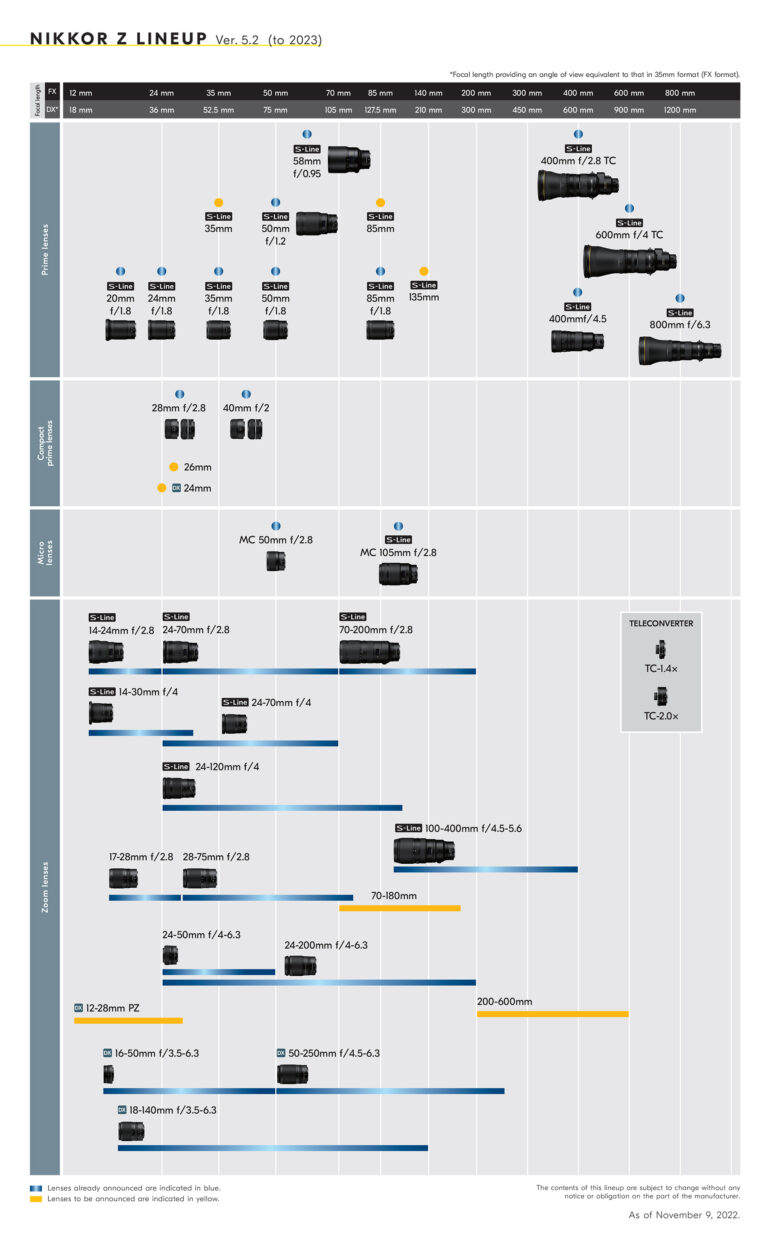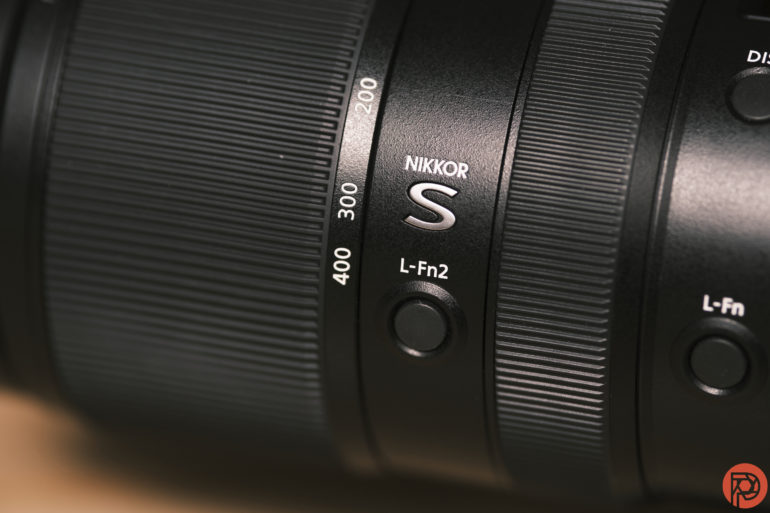Since launching the Z system in 2018, Nikon has used lens roadmaps to apprise photographers of what’s next. With just three native Nikon Z lenses at the launch, those projections were vital in convincing its longtime fans when to make the mirrorless switch. But while the initial roadmap projected two years out, 2023 is the last year listed in the current projections — and there are just six lenses left that haven’t seen at least a development announcement. That, of course, begs two questions: When are we going to see those remaining six lenses? And where will the Z lens line-up go from here?
As a relatively new mount, Nikon Z lenses had a few holes in its lineup, particularly compared to Sony’s early mirrorless adoption. Nearly five years later, many of those holes are partially filled. The line-up now includes several primes and long-reaching zooms. And while the launch of cheaper APS-C bodies created more holes, affordable DX lenses are gradually growing. That is giving Nikon some space to fill in wants rather than needs, like the new 85mm f1.2 S when an 85mm f1.8 S already exists.
What’s next for Nikon Z Mount lenses?

One of the lenses sitting on the Nikon roadmap the longest is the still unannounced 200-600mm, which has been lingering on the end of the list since the fall of 2019. This is a crucial lens for utilizing the bird eye AF on the Nikon Z9. Zoom is often an essential feature for sports and wildlife, and the difference between a 100-400mm f4.5-5.6 and a 200-600mm is quite significant for those genres. Hopefully, this lens will also come with bird eye AF for Nikon’s mid-level bodies, as only the Z9 is designed for eyes beyond people and pets.
The other unannounced telephoto zoom is the 70-180mm. Nikon already has a high-end 70-200mm f2.8 S lens, so I anticipate the 70-180mm being both more budget-friendly and more portable with its shorter zoom range.
Nikon also has two primes left to announce on the list: a 135mm and a 35mm. Both lenses are listed as S-Line lenses, encompassing the company’s sharpest but often priciest optics. The 135mm is placed in the roadmap next to the existing f1.8 primes, while the 35mm is placed right next to the existing 50mm f1.2. Since Nikon already has a 35mm f1.8 S, an 35mm f1.2 would make the most sense. Meanwhile, the 135mm, if it is an f1.8, will be another portrait option with greater background compression than an 85mm.
Nikon also has two DX lenses on its list, a 12-28mm PZ, and a 24mm. The 24mm is listed in the compact prime category, suggesting a pancake design. The PZ in the wide-angle zoom designates Power Zoom — it’s likely a lens designed for video and pairing with the Z30. PZ lenses also benefit stills by zooming remotely using the mobile app.
Where will Nikon Z lenses go from here?

When we reach the end of 2023, will Nikon release another lens roadmap, or was it just a temporary strategy to satiate the appetite of the first photographers to convert to a new system? Nikon has been pretty good about keeping the lens roadmap updated for the last few years — though they did announce a few surprises not on the list — and hopefully, that trend will continue.
But what does the Nikon Z line-up need next? The lens options have come a long way in five years, and there are far fewer gaps. With fewer obvious holes, Nikon should focus on getting more affordable options and taking advantage of that wider mount with more f1.2s and perhaps even brighter.
Nikon still lacks my favorite budget F-Mount lens, the $220 AF-S Nikkor 50mm f1.8G. Yes, the Z line has three 50mm lenses, but the most affordable is still $630. A nifty fifty not in the S-Line with a lower price point would be a welcome addition, particularly for budget shooters. If Nikon isn’t going to license third-party lenses that directly compete with its own optics, then it needs to go further in providing optics at a wider range of price points.
Nikon reworked its lens mount from the F-Mount to make wider apertures possible — with all the must-have lenses covered, Nikon should begin launching more bright aperture lenses. There’s just the 58mm f0.95, 50mm f1.2, and 85mm f1.2, with a 35mm expected. To really take advantage of that wider mount, I would love to see more f1.2 lenses and beyond.
The Z line-up is also noticeably missing specialty lenses, like a tilt-shift and a fisheye. Nikon also has a gap in prime lenses between the upcoming 135mm and the 400mm. An affordable 70-300mm was once among my favorite Nikon lenses, and the Z system has yet to add a similar option as well.
Of course, the many existing F-Mount lenses can be paired with an adapter to fit on the Z system. But, the biggest reason to choose the Z system in the first place is the lenses. While a few of the lenses are mediocre, many of the S-series lenses have a spectacular blend between sharpness and bokeh while still allowing a bit of lens flare in. The most significant difference between shooting with a Nikon DSLR and a Nikon Z-Mount comes when using a Z-mount lens designed specifically for that newer, wider mount. Nikon has some beautiful Z lenses — hopefully, we’ll see even more soon.


Leave a Reply